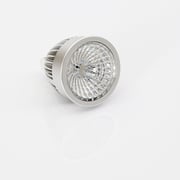Is the energy efficiency field growing up? I am cautiously optimistic that the answer to this question is “yes.” From the discussions of the major carbon producers - China and USA – regarding limits to their emissions, to building codes ever increasing minimum building efficiencies, and efficient technologies being accepted by the market, it seems promising. Another positive sign is that energy efficiency programs are starting to go deeper into more complicated measures. This means we’re moving energy efficiency programs past the “low-hanging fruit” that the market understands, and administrators are looking towards new areas and technologies.
Although it is a fact that conserving energy is cheaper than generating energy, even in the most environmental manner, in my mind, energy efficiency is a movement, a “philosophy” if you will. It’s a lifestyle where one pursues the simplicity of living within our means to the benefit of everyone. It reduces our overhead, makes our businesses more competitive, improves our quality of life, and enables us to spend money in other areas. In addition to the altruistic goal of saving the planet, wasting energy is just a waste of money!
We’re Moving On: Accepted Technologies
LEDs – they’re dimmable, can handle cold temperatures, don’t contain mercury, and now have a color rendering that doesn’t make us all look sickly. They’re flying off the shelves! And the incandescent bulb is finally recognized as a better heat source than light source.

Building Envelope – would you ever buy a single pane window anymore? How about accepting a cold drafty building? Air sealing, higher insulation levels, and building sealing are not cheap, but commercial and residential building owners appreciate their importance. Although energy efficiency programs are still quite necessary to help people afford these types of improvements, the market has felt the value of these measures and we can all focus on implementation rather than persuasion.

It’s an exciting time in the efficiency world for two reasons: 1) people are getting it (why waste energy? - it’s costly and makes our businesses less competitive), and 2) technologies are proven, available and cost-effective. There are innumerable components that seamlessly increase the life of our equipment and reduce wasted energy. Who hasn’t experienced occupancy sensors automatically turning on the lights when we walk into the room? Building controls such as this are now everywhere – nighttime setbacks, daylight dimming, motor variable speed drives, photocells on outdoor lighting. There is room to grow with ever improving control systems, which are continuously becoming less expensive, and the market is starting to ask for it on its own.
What’s Next for Energy Efficiency Programs?
So, what’s next? Well, efficiency programs are looking at retrocommissioning, improved controls of commercial refrigeration and kitchen exhaust, compressed air system improvements, behavioral programs, plug load controls, combined heat and power (CHP), among others. These measures aren’t as simple as a lighting replacement, but they hold promise as a solid next step to a deeper quest for identifying wasted energy.


